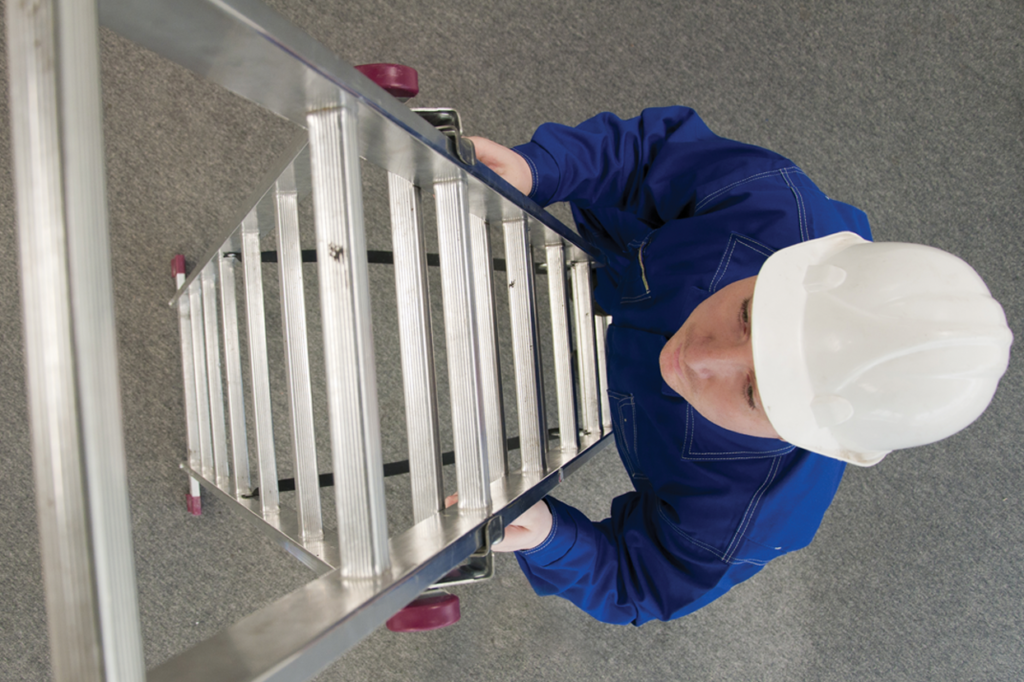Skip, SFM’s safety hero, is on a crusade to prevent slips, trips and falls — including falls from ladders.
Falls from heights continue to be a top cause of workplace injuries. More than a third of workplace fatalities in the U.S. in 2018 were due to a fall from elevation, OSHA reports.
According to the American Ladder Institute (ALI), the five most common causes of ladder accidents include:
- Missing the last step when climbing down
- Overreaching
- The ladder was not the right size for the job
- The individual stood on the top rung/ladder cap
- The ladder was not in good working condition
Practice safe ladder use
You can prevent many falls from heights by following a few simple rules.
- Use the right ladder for the job. Don’t use a step ladder as a straight ladder.
- Make sure the ladder is in good condition – see our tips on proper ladder inspection.
- Ensure the load rating is adequate for the job and make sure to include the weight of the worker, materials and tools in your estimation.
- Keep it placed on a firm surface. Use plywood or other similar materials if the ground is too soft.
- Keep the base of the ladder 1 foot away from the wall for every 4 feet of height.
- Don’t overreach. Maintain your balance when working on a ladder and rather than reaching, climb down and move the ladder to a better position.
- Maintain three points of contact on the ladder.
- Never climb a ladder with your hands full. Instead use proper carrying devices.
- Face the ladder when climbing or descending.

Ladder safety resources
Proper ladder use can be made easier by accessing the ladder safety app from the National Institute for Occupational Safety and Health . The app includes an angle measuring tool, inspection checklist and rules for proper use.
OSHA also has ladder safety tips to stop falls .
SFM offers hundreds of safety training resources to help prevent workplace injuries. Download these ladder safety resources to remind your employees not to risk a fall.
